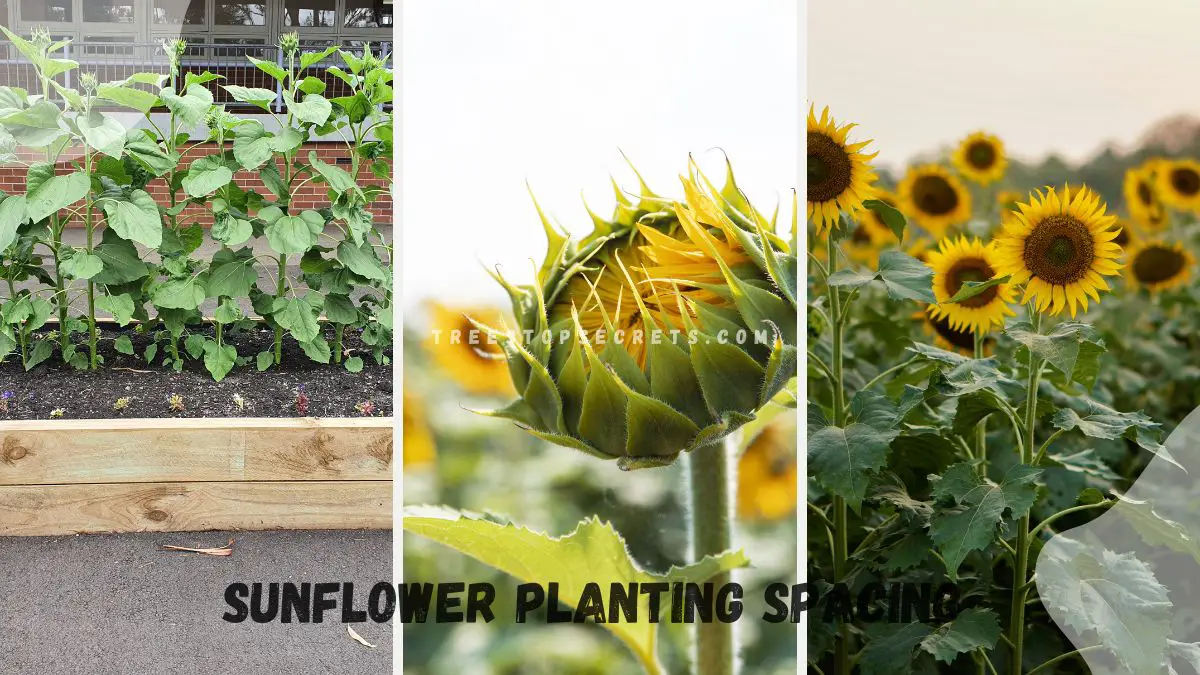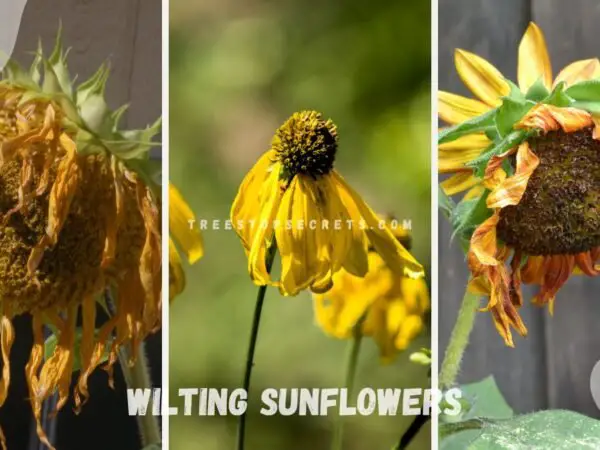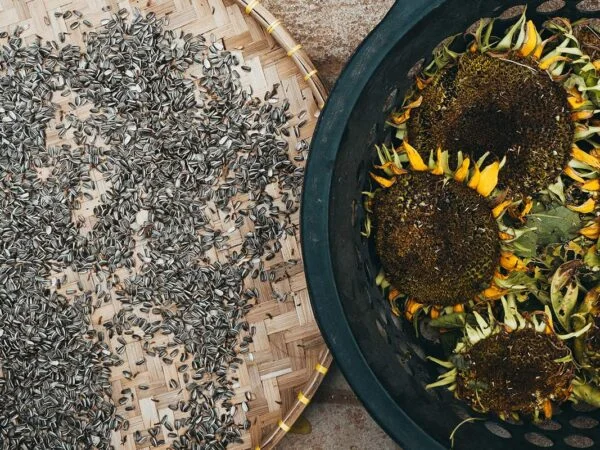Did you know that the spacing between sunflower plants can significantly impact their growth and overall yield? Proper spacing is key to ensuring that each plant receives adequate sunlight, water, and nutrients for optimal development. By understanding the importance of sunflower planting spacing, you can enhance the health and productivity of your sunflower garden. Whether you are a seasoned gardener or new to planting sunflowers, mastering the art of spacing can make a world of difference in your harvest.
Key Takeaways
- Choosing Seeds: Select sunflower seeds based on your desired size, color, and variety for a successful planting experience.
- How to Sow: Follow proper sowing techniques by planting seeds at the right depth in well-draining soil for optimal growth.
- Plant Spacing: Ensure adequate spacing between sunflower plants to promote healthy development and prevent overcrowding.
- Growing On: Monitor sunflowers as they grow, providing sufficient water, sunlight, and nutrients throughout their growth stages.
- Stage of Harvest: Harvest sunflowers at the right stage by observing the flower head for signs of maturity and readiness.
- Post Harvest Care: After harvesting, dry sunflower heads properly and store seeds in a cool, dry place for future use or consumption.
Choosing Seeds
Seed Variety
Choose sunflower seed varieties based on bloom size and color preferences. Consider the mature height of the sunflower plant when selecting seed varieties. Opt for hybrid sunflower seeds for improved disease resistance.
Growth Conditions
Ensure sunflowers receive at least 6-8 hours of direct sunlight daily. Provide well-draining soil to prevent waterlogging and root rot. Maintain consistent soil moisture levels to support healthy growth.
Sunflower Types
Differentiate between single stem and branching sunflowers for planting spacing. Understand the growth habits, flower production, and flowers of each sunflower type. Select sunflower types based on intended use, such as cut flowers or garden decoration.
How to Sow
Soil Preparation
To ensure optimal root growth, loosen the soil to a depth of 12-18 inches before planting sunflowers. Incorporate compost or organic matter to enrich the soil with essential nutrients. Test the soil pH and adjust it to the recommended range for sunflowers, which is between 6.0 and 7.5.
Sowing Techniques
Directly sow sunflower seeds into the garden after the last frost date has passed. Plant the seeds about 1 inch deep in the soil, ensuring proper spacing based on the type of sunflowers being planted—whether single stem or branching varieties. After planting, water the seeds immediately to kickstart germination.
Watering Needs
For healthy sunflowers, water them deeply but infrequently to promote deep root growth. Regularly monitor soil moisture levels, especially during hot and dry periods, to prevent water stress. Avoid overhead watering methods as they can lead to fungal diseases and further water stress.
Plant Spacing
Spacing Basics
Plant spacing is crucial for the healthy growth and development of sunflowers. When planting, consider the type of sunflower you are working with. For single stem sunflowers, it is recommended to space them 4-9 inches apart. This spacing allows each plant to receive adequate nutrients and sunlight for optimal growth and bloom size. On the other hand, branching sunflowers should be placed 12-24 inches apart to accommodate multiple blooms per plant effectively.
Variety Specifics
When it comes to sunflower planting, there are various varieties to choose from, each with its unique characteristics. Explore options such as dwarf, giant, or colored blooms to add diversity to your garden. Understand the specific traits of each variety in terms of height and flower size before making your selection. Ensure that the chosen sunflower varieties align with your garden space and aesthetic preferences for a visually appealing landscape.
Adjusting for Light
To ensure the healthy growth of sunflowers, it is essential to consider their light requirements. Position your sunflowers in locations that receive full sun exposure throughout the day. If you notice your sunflowers leaning towards a particular light source, consider rotating your plantings to promote even growth. Using reflective mulch or strategically planting taller sunflowers can provide shade for shorter plants and maintain a balanced light distribution in your garden.
Growing On
Fertilizing
Sunflowers benefit from a balanced fertilizer with higher phosphorus levels to support robust flower development. Avoid over-fertilizing to prevent excessive vegetative growth. Opt for organic fertilizers like compost or aged manure for slow and steady nutrient release.
- Monitor sunflowers regularly for common pests such as aphids, caterpillars, and beetles.
- Utilize natural predators like ladybugs or beneficial insects to control pest populations effectively.
- Implement physical barriers or organic sprays to repel pests while safeguarding essential pollinators.
Watering Schedule
- Establish a consistent watering routine based on weather conditions and soil moisture levels.
- Adjust the watering frequency during rainy periods to prevent waterlogging and root rot.
- Water sunflowers in the early morning to minimize evaporation and reduce the risk of fungal diseases.
Stage of Harvest
Timing Tips
Starting sunflower seeds indoors 4-6 weeks before the last frost date can provide an early start for your plants. Transplanting sunflower seedlings outdoors should be done after the danger of frost has passed. Ensure that your sunflower planting coincides with the peak growing season to promote optimal growth.
Harvest Signs
Identify the ideal harvest stage by observing the sunflower petals pointing forward, indicating prime readiness. To maintain freshness, harvest sunflowers before the petals start pointing back. When cutting sunflowers, ensure that the stems are at least 24 inches long for an extended vase life and beautiful display.
Collection Methods
When collecting sunflowers, it's essential to use sharp pruners or scissors to cut the stems cleanly at a 45-degree angle. Removing excess foliage from harvested sunflowers is crucial to prevent bacterial growth in water. After harvesting, immediately place the cut sunflowers in a bucket of water to maintain their freshness.
Post Harvest Care
Seed Storage
- Store sunflower seeds in a cool, dry place to maintain their viability and prevent deterioration.
- Use airtight containers or resealable bags to shield the seeds from moisture and pests.
- Label storage containers with essential details like seed type and harvest date for easy identification.
Plant Maintenance
- Regularly deadhead spent blooms to promote continuous flowering and maintain plant health.
- Provide support to tall sunflowers using stakes or trellises to prevent stem breakage.
- Keep an eye on your sunflowers for any signs of disease or nutrient deficiencies and address them promptly.
Common Questions
Spacing Queries
Plant sunflowers with adequate spacing to prevent overcrowding and ensure optimal growth conditions. Adjust the distance between each plant based on their specific requirements for proper development. Consult gardening resources or experts for personalized advice on sunflower spacing to avoid issues like overcrowding or gaps between plants.
Growth Issues
Troubleshoot common sunflower growth problems such as stunted growth or yellowing leaves by identifying potential causes. Nutrient deficiencies or pest infestations can hinder sunflower growth, impacting their overall health. Implement corrective measures like fertilization or pest control to address these issues and revive the healthy growth of sunflowers.
Harvest Doubts
Clarify uncertainties surrounding sunflower harvest timing and techniques to ensure a successful harvest. Seek guidance on determining the optimal stage for harvesting sunflowers based on factors like petal color and seed maturity. Explore post-harvest care tips, including proper watering and vase life extension methods, to enhance the longevity of cut sunflowers.
Final Remarks
You now have the essential knowledge to successfully plant and grow sunflowers. Remember to choose quality seeds, sow them correctly, space your plants adequately, and provide proper care throughout the growth stages. By following these steps, you can ensure a bountiful harvest and vibrant sunflower display in your garden.
Take action today by applying these tips to your sunflower planting project. Share your newfound expertise with fellow gardening enthusiasts and continue to expand your skills in nurturing beautiful blooms. Your dedication and attention to detail will yield stunning results that you can enjoy and take pride in. Happy planting!
Frequently Asked Questions
How far apart should I space my sunflower seeds when planting?
When planting sunflower seeds, space them around 6-12 inches apart to allow enough room for the plants to grow and receive adequate sunlight and nutrients.
What is the best time of year to plant sunflowers?
The best time to plant sunflowers is in late spring or early summer when the soil has warmed up and there is no longer a risk of frost. This allows the seeds to germinate and grow successfully.
Do sunflowers need a lot of water?
Sunflowers require regular watering, especially during dry periods. Water deeply once a week, ensuring the soil is moist but not waterlogged. Adjust the frequency based on weather conditions to prevent overwatering.
How long does it take for sunflowers to grow from seed to flower?
Sunflowers typically take about 80-120 days to grow from seed to flower, depending on the variety and growing conditions. Some varieties may flower bloom earlier, while others may take longer to reach full maturity.
Can I plant sunflowers in pots or containers?
Yes, you can plant sunflowers in pots or containers as long as they are large enough to accommodate the mature size of the plant. Ensure the container has proper drainage holes and use well-draining soil to support healthy growth.
Image Source: Paid image from CANVA




